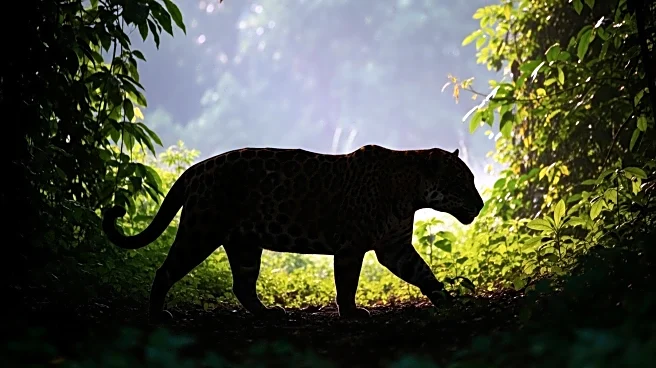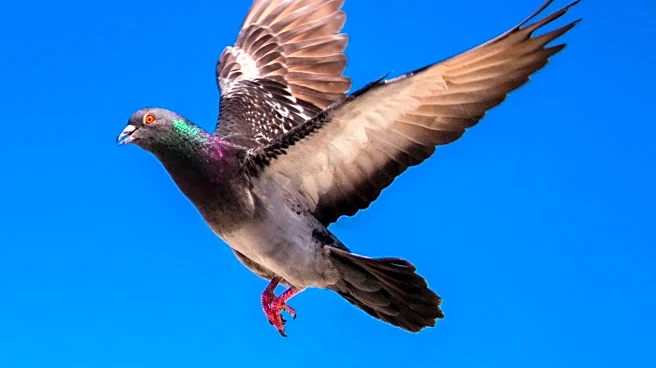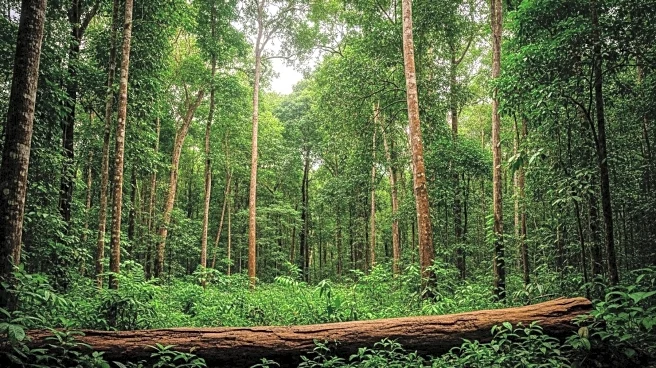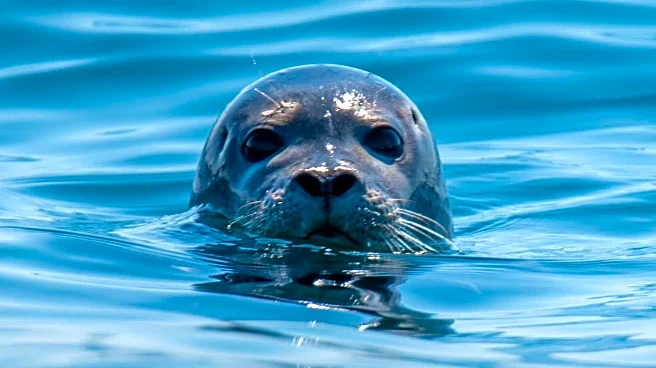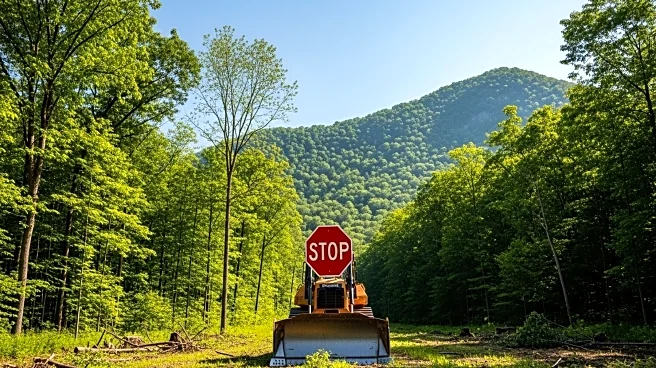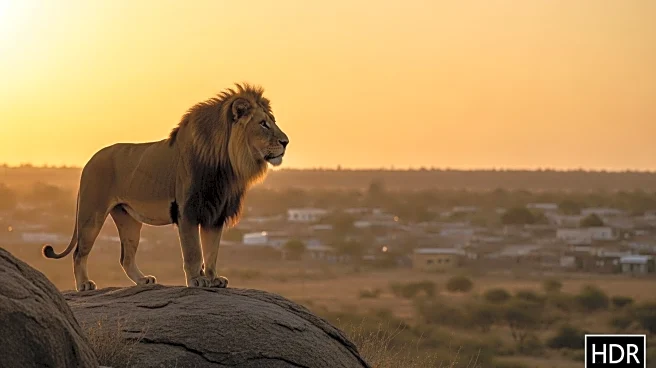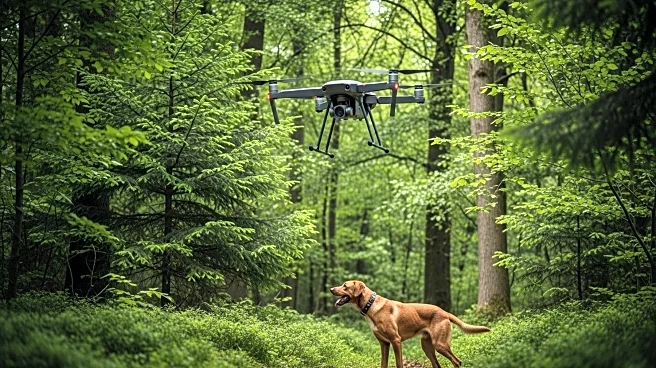What's Happening?
Conservationists in Mexico have reported a significant increase in the country's jaguar population, with numbers rising by 30% since 2010. The National Alliance for Jaguar Conservation (ANCJ) conducted a comprehensive census, revealing that the jaguar population has grown from 4,100 in 2010 to 5,326 in 2024. This increase is attributed to efforts such as maintaining protected areas, reducing conflicts with cattle ranchers, and raising public awareness about the species. Despite this progress, challenges remain, including deforestation and habitat loss, which threaten the jaguar's survival. The census, which involved 920 motion-capture cameras and nearly 50 researchers, covered 414,000 hectares across 15 states, making it the largest mammal census in Mexico.
Why It's Important?
The increase in jaguar numbers is a positive sign for biodiversity and conservation efforts in Mexico. Jaguars play a crucial role in maintaining the ecological balance, and their recovery indicates a healthier ecosystem. However, the ongoing threats of deforestation and habitat destruction highlight the need for continued conservation efforts. The success of these initiatives could serve as a model for other countries facing similar challenges. Additionally, the involvement of local communities in conservation efforts underscores the importance of grassroots participation in environmental protection.
What's Next?
Conservationists aim to further increase the jaguar population and reduce the time needed for the species to be removed from the endangered list. This will require continued efforts to protect natural habitats, mitigate human-wildlife conflicts, and combat illegal wildlife trade. Collaboration with social media companies to curb the online sale of jaguar parts is also a priority. The federal government and private sector support will be crucial in achieving these goals and ensuring the long-term survival of the jaguar population in Mexico.
